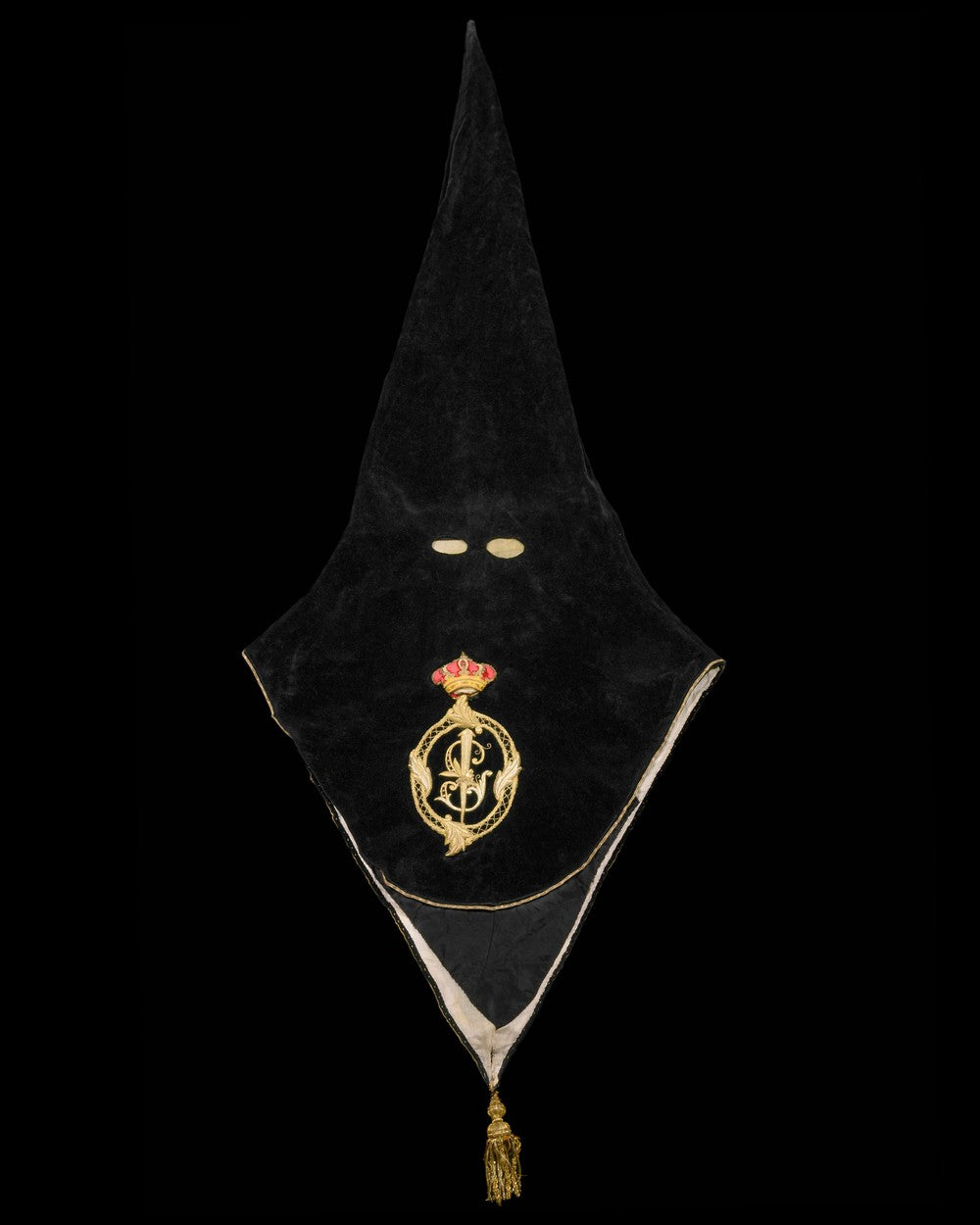CAPIROTE OF PENITENT OF THE ORDER OF THE HOLY SEPULCHER
CAPIROTE OF PENITENT OF THE ORDER OF THE HOLY SEPULCHER
Our prices are in euros, the prices converted in dollars or other currencies can vary according to the rate.
Free Worldwide Shipping – Secure and Protected Delivery
ref: #RK00-271Impressive capirote of a Spanish penitent known as a Nazarene bearing the insignia of the Order of the Holy Sepulcher of Jerusalem.
Magnificent manufacturing quality, badge embroidered with gold thread, perfect condition. Oddities collection
PERIOD : First part of the 20th century
SIZE : 135cm X 50cm
SIZE : 53.2" X 19.7"
The Order of the Holy Sepulcher of Jerusalem is a Roman Catholic order of chivalry that dates back to the Middle Ages. Its origin dates back to the 11th century, when the Crusaders conquered Jerusalem in 1099. The order was created to defend the Holy Sepulcher, the place where according to Christian tradition, Jesus Christ was buried and resurrected.
The Order of the Holy Sepulcher was officially recognized by Pope Paschal II in 1113. It was established to protect Christian holy sites and to assist Christian pilgrims to the Holy Land. Over the centuries, the order evolved and was reorganized several times.
Historically used by flagellants from the Middle Ages, the capirote was also present during death sentences handed down by the Inquisition, where the condemned person was forced to wear this hat to be publicly humiliated. This humiliation echoes that of Jesus Christ during his ascent from Golgotha.
This costume was also used by flagellants, who, as their name indicates, imposed torture on themselves to atone for their sin; flogging was one of the main self-inflicted punishments. All this, anonymously thanks to the concealed face.
From the 17th century, the brotherhoods of Seville began to use it during Holy Week processions, in commemoration of the Passion of Christ for the remission of the sins of men, and his subsequent resurrection.



